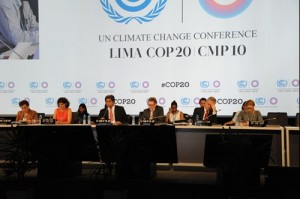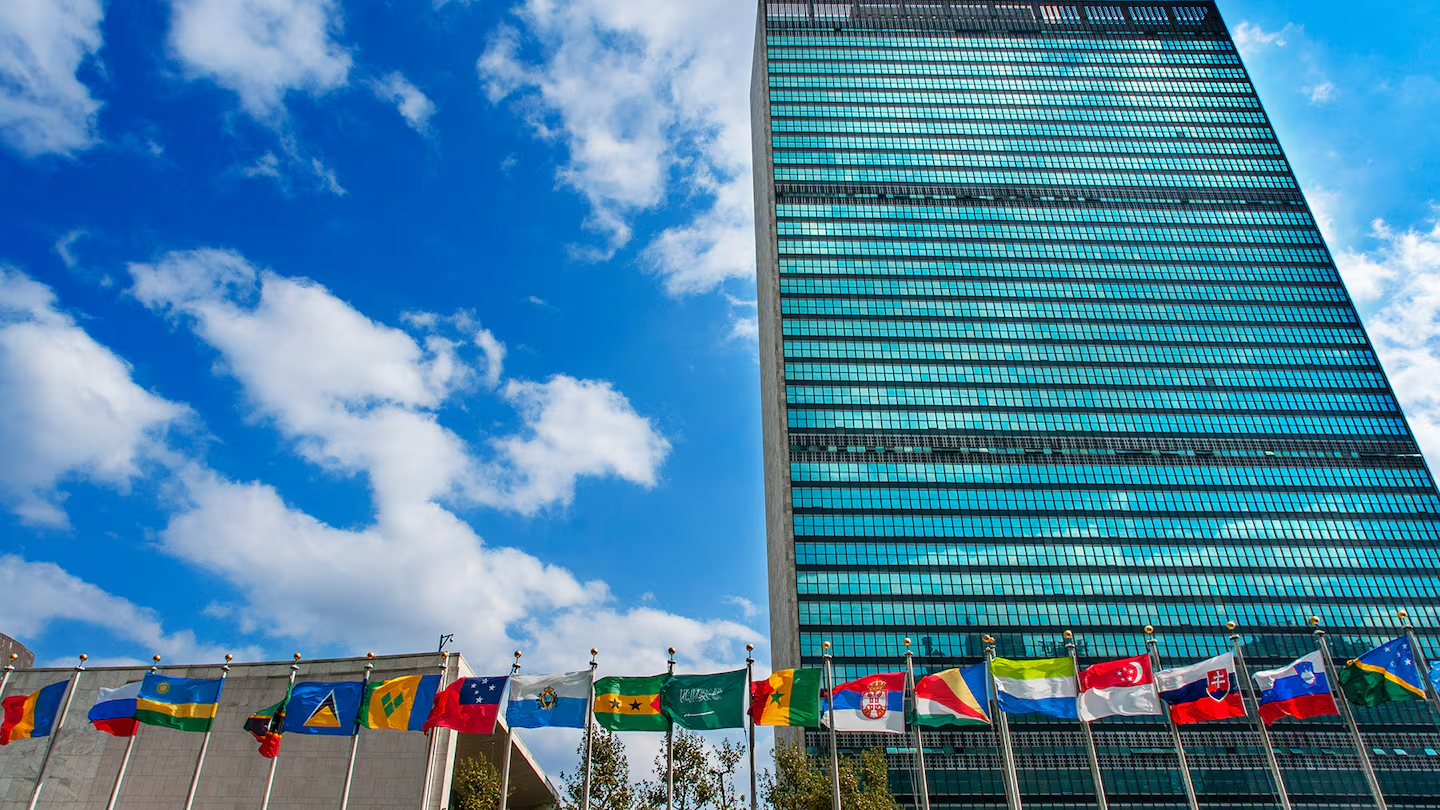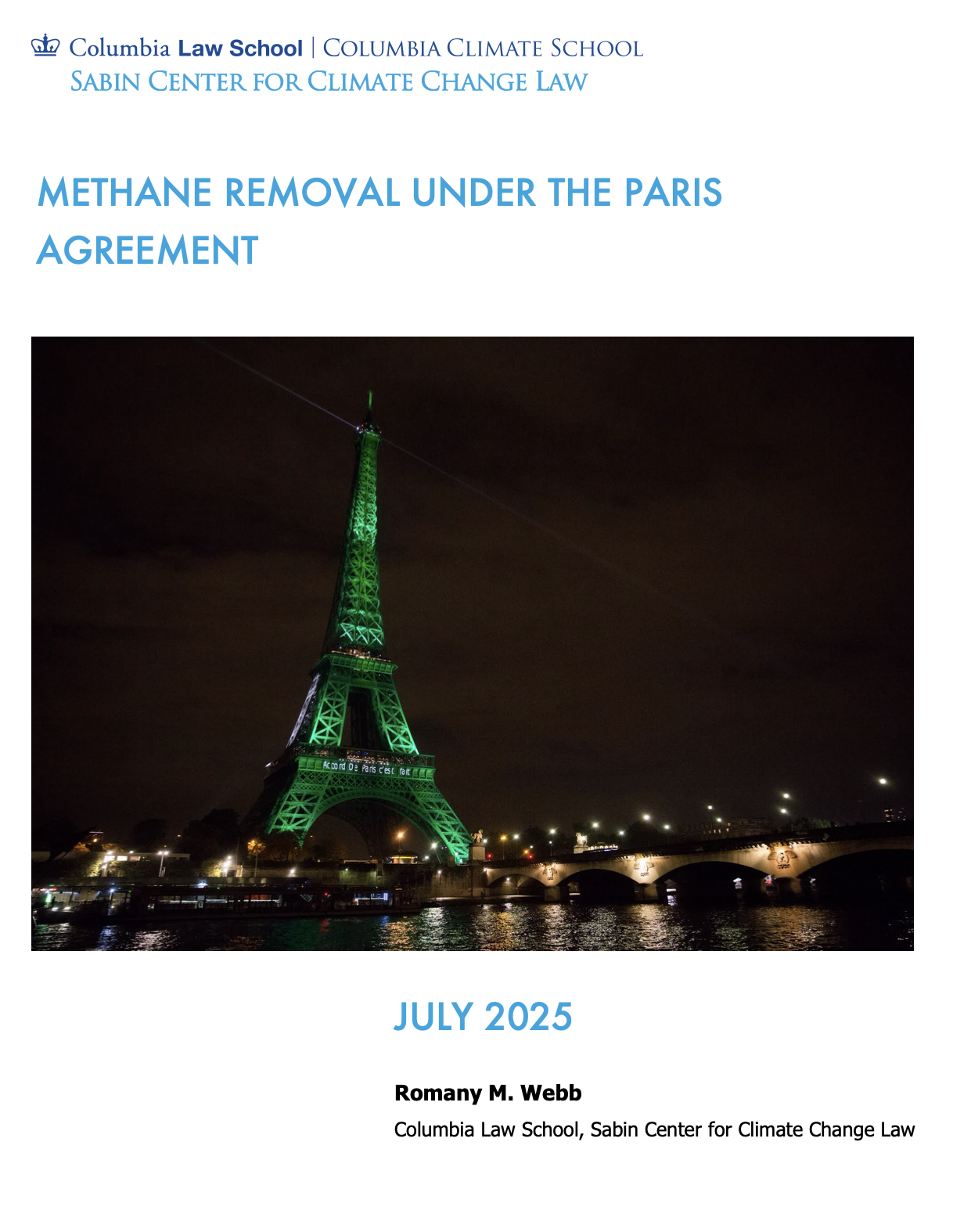Associate Directors Jennifer Klein and Jessica Wentz
 Working into the early morning on Sunday, negotiators from almost 200 nations finally reached an agreement after the two-week United Nations Conference of the Parties (COP) in Lima, Peru. UN officials were scheduled to release the agreement at noon on Friday. However, the negotiations ran past the deadline, and delegates spent the final 36 hours scrambling to finalize the draft document which will form the framework for a global accord to be signed next year in Paris.
Working into the early morning on Sunday, negotiators from almost 200 nations finally reached an agreement after the two-week United Nations Conference of the Parties (COP) in Lima, Peru. UN officials were scheduled to release the agreement at noon on Friday. However, the negotiations ran past the deadline, and delegates spent the final 36 hours scrambling to finalize the draft document which will form the framework for a global accord to be signed next year in Paris.
The Lima Accord provides that countries will submit plans indicating their emissions mitigation targets and the steps they will take, including implementing new domestic laws, to reach these targets. These mitigation plans, known in UN parlance as Intended Nationally Determined Contributions (INDCs), are to be submitted by the first quarter of 2015 for “those Parties ready to do so.” By November 1, 2015, the UNFCCC will prepare a report on the gap between the Parties’ aggregate pledges and the emissions pathway consistent with avoiding severe climate change impacts.
All Parties, not just developed countries, are invited to submit INDCs. The willingness of developing countries, including major emitters like India and China, to work towards limiting their own emissions is one of the major accomplishments of the Lima talks. In contrast, the 1997 Kyoto Protocol did not require emissions cuts from developing nations. Largely due to this omission, the Kyoto Protocol was never submitted for ratification in the United States. Thus, the Lima Accord represents a departure from the past two decades of climate change negotiations, which drew a stricter distinction between developed and developing nations. On the other hand, developed countries are still expected to contribute their fair share; the Lima Accord “underscores” the “principal of common but differentiated responsibilities” and directs Parties to discuss how their INDCs are “fair and ambitious, in light of [] national circumstances.”
Major compromises were struck in the course of the negotiations, resulting in a largely voluntary agreement that leaves much to be determined between now and next year’s conference in Paris. First, there is no legal repercussion if Parties fail to submit an INDC by the March deadline, or even if they fail to submit one at all. There is also no mechanism, other than global peer pressure, to ensure that countries’ INDCs are ambitious in their emissions reductions goals. Nor were rules put in place regarding the information countries must provide in their INDCs or a standard set of metrics for measuring mitigation targets.
Moreover, although the recent United States-China climate change pact brought momentum and optimism to the negotiations in Lima, China resisted efforts to establish a system to monitor Parties’ mitigation actions. Thus, the Lima Accord does not contemplate a mechanism to ensure that Parties follow through with their pledges. Additionally, certain issues are not explicitly addressed in the Lima Accord. For example, while developed countries are urged to provide financial support to developing countries for mitigation and adaptation actions, INDCs need not include information regarding finance countries’ financial pledges. Similarly, Parties are “invite[d]…to consider communicating their undertakings in adaptation planning” in their INDCs, but the Lima Accord does not provide guidance as to the information that should be provided regarding adaptation plans.

In short, the Lima Accord, while notable for eliminating the distinction between developing and developed countries in its invitation for INDCs, includes no legally binding requirements and relies almost exclusively on global peer pressure to enforce its directives. It remains to be seen whether peer pressure will be sufficient to spur world leaders to enact ambitious new laws to combat climate change leading up to next year’s conference in Paris.
During the Lima talks, the Sabin Center for Climate Change Law worked with the Legal Response Initiative (LRI) to provide pro bono legal services to the Least Developed Countries (LDCs) participating in negotiations at the COP. LRI connects poor and particularly climate vulnerable developing countries to its worldwide network of lawyers, who provide free legal support, give hands-on assistance during meetings, draft legal opinions, and build the capacity of lawyers and negotiators from developing countries.
Sabin Center Associate Director Jennifer Klein and former Associate Director Meredith Wilensky assisted LRI in Lima by fielding queries during the negotiations and developing LRI’s relationships with LDC delegates from Bangladesh, Botswana, Malawi, and many other nations. At the Sabin Center office in New York, Associate Director Jessica Wentz ran a “mini situation room,” where she directed queries to North American legal experts.
The Sabin Center and LRI received a wide variety of legal queries from LDC delegates, ranging from broad requests for a summary of likely COP outcomes to specific legal questions about negotiation procedures. Some of the substantive topics covered included: possible pathways for incorporating a more robust focus on human rights into the overarching framework for global climate governance, the legal significance of adaptation commitments included in the parties’ INDCs, and an evaluation of different mechanisms for incorporating the draft negotiating text into the ADP decision.




